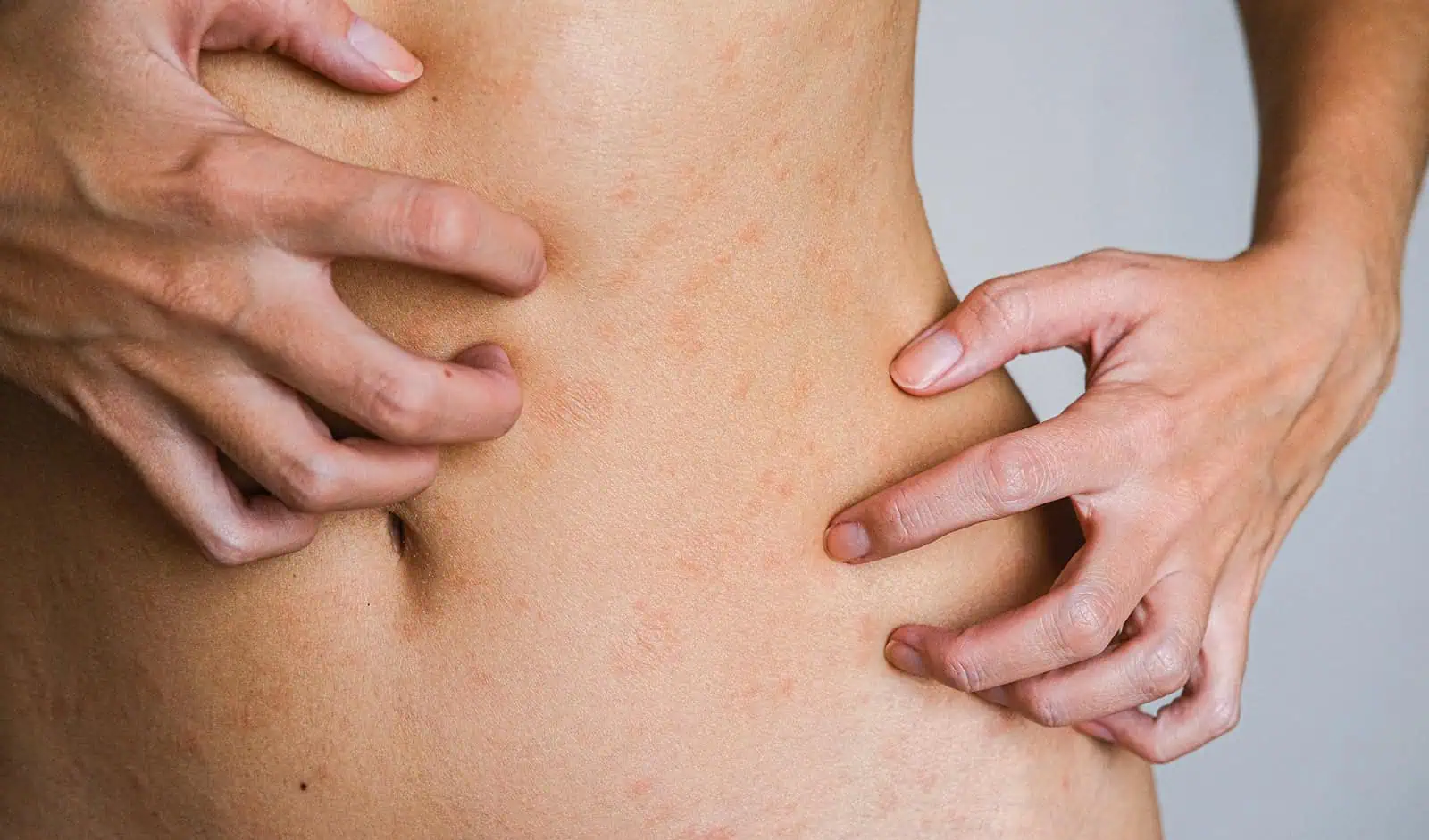Skin Allergies – Comprehensive Patch Testing in New York, NY

Skin Allergies – Comprehensive Patch Testing in New York, NY
Skin allergies—Comprehensive Patch Testing is a diagnostic tool used to identify specific substances that cause allergic reactions on the skin. This method involves applying small amounts of various allergens to the skin using patches left in place for a specified period. The patches are removed, and the skin is observed for reactions over a few days. This testing helps pinpoint the allergens responsible for skin reactions, aiding in effective treatment and management.
Causes of Skin Allergies – Comprehensive Patch Testing
Various substances, such as chemicals in cosmetics, fragrances, metals, preservatives, and medications, can trigger skin allergies. Identifying the exact cause can be challenging without comprehensive patch testing, as many allergens can produce similar reactions.
Identifying the exact cause can be challenging without comprehensive patch testing, as many allergens can produce similar reactions.
Chemicals in cosmetics
Ingredients in makeup, skincare, and hair products can cause allergic reactions. Common culprits include parabens, sulfates, and certain dyes.
Fragrances
Fragrances in perfumes, lotions, and household products can trigger skin allergies. Both natural and synthetic fragrances can be problematic.
Metals
Metals such as nickel, found in jewelry, watches, and belt buckles, are frequent causes of allergic contact dermatitis.
Preservatives
Preservatives used in cosmetics, medications, and food products can cause allergic reactions. Examples include formaldehyde and parabens.
Medications
Topical and oral medications can lead to skin allergies. Common allergens include antibiotics, antiseptics, and certain pain relievers.
Different Procedures for Skin Allergies – Comprehensive Patch Testing
Initial Consultation
During the initial consultation, the healthcare provider will take a detailed medical history, including information about current skin issues, lifestyle, and known allergies. This step helps in selecting the most relevant allergens for testing.
Patch Application
Patches containing small amounts of different allergens are applied to the skin, typically on the back. These patches are secured with hypoallergenic tape and left in place for 48 hours. Keeping the area dry and avoiding strenuous activities that may dislodge the patches is crucial.
First Evaluation
After 48 hours, the patches are removed, and the initial evaluation is performed. The healthcare provider examines the skin for immediate reactions, such as redness or swelling, and records the findings.
Second Evaluation
A follow-up evaluation is conducted 72 to 96 hours after removing the patches. This step is critical as some allergic reactions may take longer to develop. The provider will note and correlate any delayed reactions with the applied allergens.
Results of Skin Allergies – Comprehensive Patch Testing
The results from comprehensive patch testing provide detailed information about specific allergens causing skin reactions. Identifying these allergens allows individuals to avoid exposure, reducing or eliminating allergic reactions. The healthcare provider will explain the results and suggest appropriate allergy management steps, including lifestyle modifications and possible treatments.
Benefits of Skin Allergies – Comprehensive Patch Testing include
- Identifies specific allergens causing skin reactions
- Helps in creating personalized management plans
- Reduces exposure to identified allergens
- Minimizes the need for unnecessary treatments
- Improves overall skin health
- Enhances quality of life by preventing allergic reactions
- Provides detailed information for better skincare choices
- Aids in the treatment of chronic skin conditions
- Non-invasive and straightforward procedure
- Offers long-term solutions for allergy management
Frequently Asked Questions
The patch testing process typically spans about a week, including the initial application, evaluations, and follow-up.
Patch testing is generally not painful. Some individuals may experience minor discomfort or itching when the patches are applied, especially if they react to one of the allergens.
The primary side effect is localized skin irritation at the test sites. In rare cases, individuals may experience more significant allergic reactions, which the healthcare provider should manage.
While you can continue most of your daily activities, such as vigorous exercise or swimming, avoiding activities that may cause excessive sweating or dislodge the patches is essential.
Keep the test area dry and avoid applying creams, lotions, or medications to the test sites. Follow your healthcare provider’s specific instructions for care during the testing period.
Yes, follow-up appointments are typically necessary to discuss the results and create a personalized management plan based on the identified allergens.
Book your appointment today with Park Plaza in New York, NY, to experience the benefits of comprehensive patch testing for skin allergies. Discover the exact causes of your skin reactions and receive a tailored plan to manage and prevent future outbreaks.
